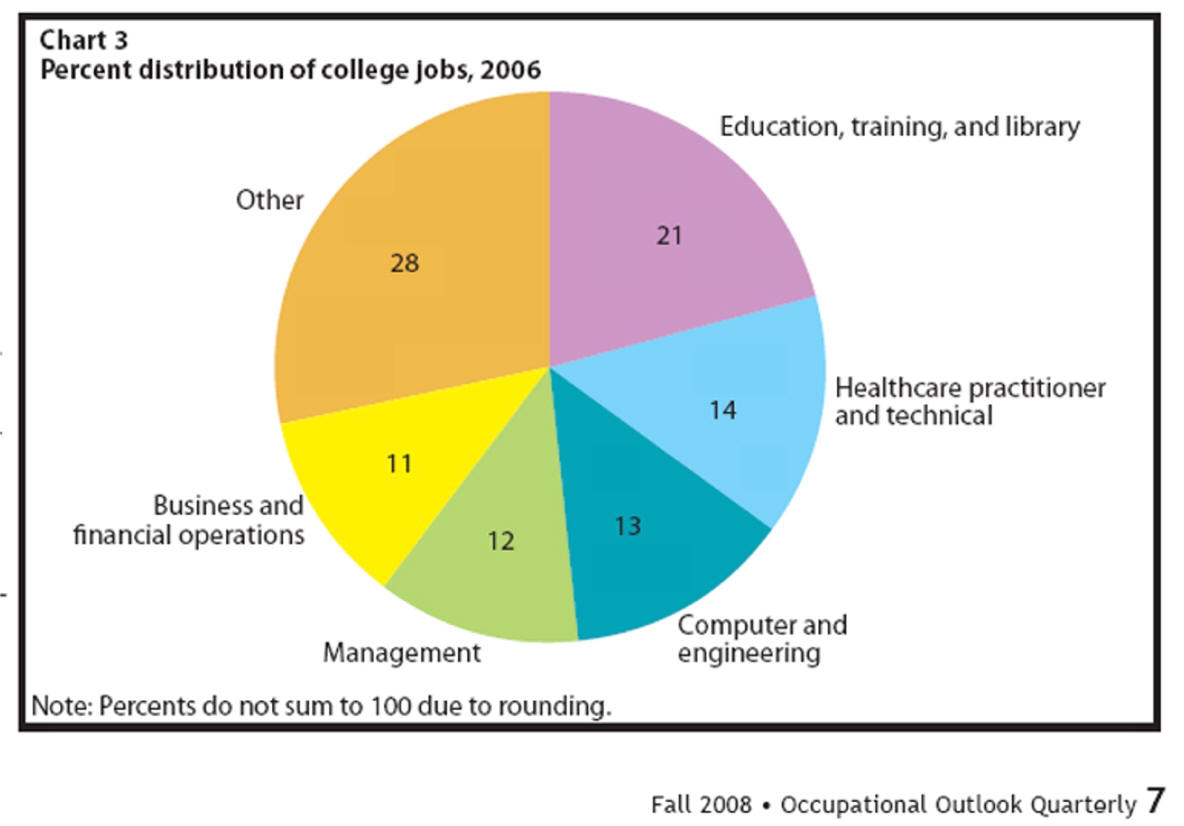|
Bureau of Labor Statistics
2004-14
Job outlook
by education
Olivia Crosby and Roger Moncarz
donít have a bachelorís degree
 Nutshell
Nutshell
 Snippet
Snippet
 PDF
PDF
have a
college graduates
 Nutshell
Nutshell
 Snippet
Snippet
 PDF
PDF
Occupation Employment Projections
to 2014
by
Daniel E. Hecker visit
Abstract
|
Excerpt |
Full text in PDF
(205K)
|
Summary of the Bureau of Labor Statistics 2004-2014 Job
Outlook
by Education
for College Graduates
"Between 2004 and 2014, BLS projects 55 million job openings for
workers who are entering an occupation for the first time. Of these, at
least 13.9 million [25.3%]are expected to be filled by
college-educated workers."
It is important to understand their definition of
college-educated workers. It is those
working in one of two groups of college graduate occupations. In "...
'pure
college' occupations', at least 60 percent of current workers aged
25-44 have a bachelorís or higher degree, fewer than 20 percent have a
high school diploma or less education, and fewer than 20 percent have
taken college courses but do not have a bachelorís degree." BLS projects
that pure-college occupations will provide about 6.9 million..." [about
12.5% of the total openings].
"Over the 2004-14 decade, about 15.6 million openings are projected
to be in occupations in which the number of college educated workers is
significantó20 percent or more but which also employ a significant
number of workers with other levels of education." Of this "Mixed
education" occupations group, the "...BLS
expects 7 million to be filled by college graduates..." [about
12.5% of the total opening][ note
12.5 +12.5 = 25]
The August 20&27 issue of Business Week states on page 45 that the
BLS reports that 34% of adult workers
in the U.S. now have a college degree. If only 12.5% of our jobs
require a pure college degree and if another 12.5% require what might be
described as significant college, why are so many academically
average students being pushed into algebra at the expense of vocational
and career training. Editor's Note: Of my eight nephews and
nieces, four have a college degree and of the the two highest earners,
one dropped out of school a week into the ninth grade and earned a GED
and the other graduated from the carpentry department of his high
school. |






 12
12